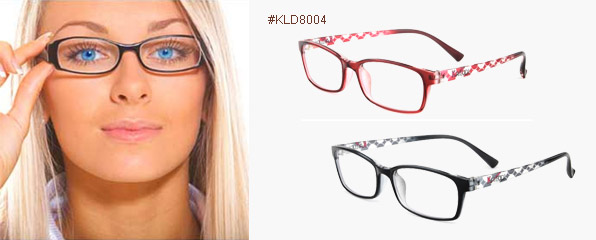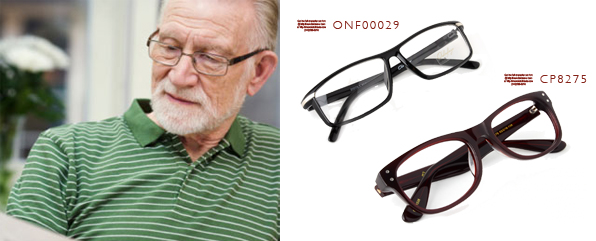Prescription progressive eyeglasses, also known as varifocal glasses, no-line bifocals or simply progressives, are a type of specs that’s gotten on fire lately. People who have just found themselves with the need of multi vision are more than happy to try this novel product and those who have been wearing traditional bifocals are curious to have a try as well. Though they do possess many merits that are not shared by other types of mutlti vision glasses, it would be too much of an over-selling to say they are perfect. In this article, we list some of the pros and cons of such glasses so as to answer the concerns our readers have when they are between the ideas about purchasing prescription progressive eyeglasses.
The biggest advantage progressive glasses have over traditional glasses and also its biggest selling point is its convenience. Just image a pair of glasses that combines all the prescription powers you need, wouldn’t that be the one you want to own right now. It’s true that the capability to allow wearers to see clearly things at varying distances just at a motion of their eyes is surely attractive to those who otherwise have to switch between glasses. By blending different powers into the same lenses, prescription progressive eyeglasses certainly make your life a less troublesome one.
The second point in favor of progressives over others, especially their fellow multi vocal candidates, bifocals or trifocals, is their aesthetic value. Unlike bifocals or trifocals which feature typically visible lines that separate different power areas, progressive lenses are made into whole and unseparated ones. Such designs avoid the obvious senior look which many people find themselves uncomfortable with, since the separating lines immediately gives away their age. With progressives on, one looks just as young as could be and feels more confident to boot.
So, convenient and good-looking, does this mean they are perfect. Well, not necessarily. As has been reported by many unsatisfied consumers, a couple of problems may occur if you don’t wear them correctly or are simply intolerant to this product. First up is blur. Due to the unique design of the lenses, many end up experiencing blur at the two end of the lenses, and others suffered from more serious problems as narrow vision fields, which could be really frustrating since your need to constantly move your head up and down to allow things you want to see into the field. Most of the people who have these issues are old bifocal or single vision glasses wearers. Their eyes have developed more added powers than the progressives can handle. So, the suggestion here is to start wearing progressive early, right at the time when you find yourself having symptoms of presbyopia, that way you wouldn’t have no difficulties adapting. Another quite common problem is the fact that in order to see thing clearly, wearers of progressives need to look right through the middle of the required vision area. This often calls for constant tilting or motion of heads, which some people finds acceptable and others just never getting used to. So, deciding if progressives are your cup of tea is more than merely cold science but largely a matte concerning your lifestyle.
So, there you have it. Both sides of the same coin. It’s not that we indicate any clue or recommendation of whether you should buy or not. Eventually it’s you yourself who should weight the merits and shortcomings and make your decision accordingly.
Firmoo Answers:
- What are side effects of using progressive lens glasses?
- What are best lenses materials for progressive glasses?
- How long does it take to get used to progressive eyeglasses?
- What are different types of progressive lens glasses?
- Why i can't read with my progressive glasses?
- What are advantages and disadvantages of progressive glasses?
- Why progressive lens glasses are so expensive?
- How to wear progressive lens glasses more comfortably?
- How to read with progressive glasses?
- What is the difference between single vision and progressive glasses?









